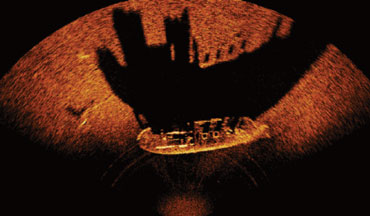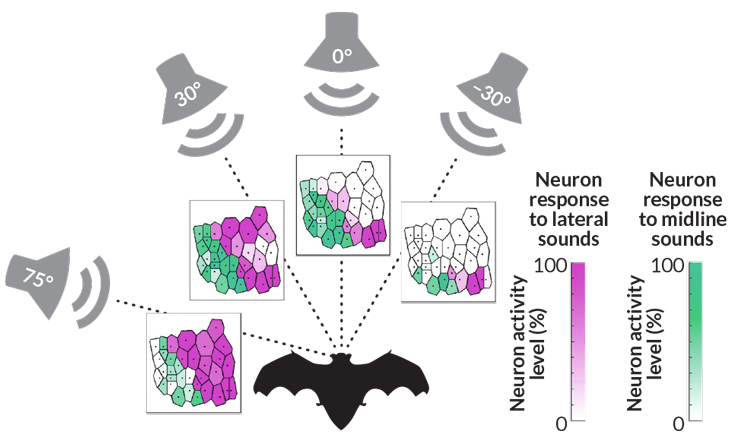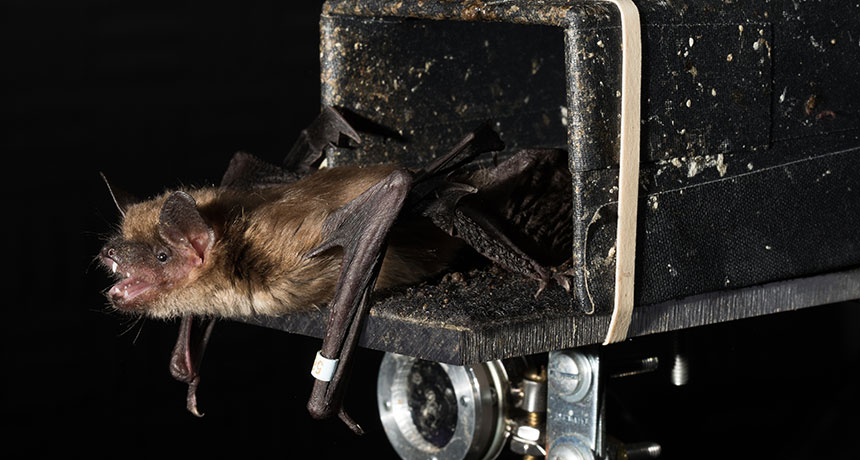
BAT BRAINS A big brown bat (Eptesicus fuscus) participates in experiments at Johns Hopkins University’s high-tech bat laboratory.
Ben Falk and Brock Fenton
Ninad Kothari’s workplace looks like something out of a sci-fi film. The graduate student at Johns Hopkins University works in a darkened, red-lit room, where he trains bats to fly through obstacle courses. Shielding within the walls keeps radio and other human-made signals from interfering with transmissions from the tiny electrical signals he’s recording from the bats’ brains as the animals bob and weave. Layers of foam further insulate the cavelike lab against sound waves. An array of cameras and microphones complete the futuristic scene.
The high-tech setup has its homemade touches, too: In one obstacle course, bats dodge dangling Quaker oatmeal cylinders.
Kothari is part of a small cadre of neuroscientists who are getting the best sense yet of how bat brains work at a cellular level, thanks to modern technologies. Eavesdropping tools, which rely on tiny probes that track the activities of individual nerve cells, or neurons, are now miniaturized enough to outfit bats with head-mounted, wireless sensors. As the animals fly freely around the lab, the researchers can listen in on neurons.
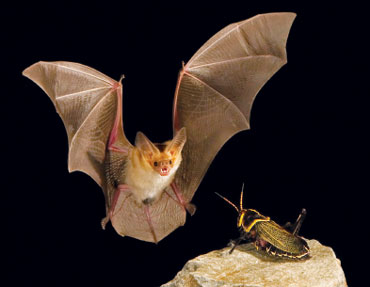
The go-to lab animals for studying how the mammalian brain maps and navigates its surroundings are mice and rats. But bat researchers say their animal of choice offers distinct advantages. For one, rodent navigation studies are mostly limited to fairly basic environments in the lab, such as mazes. Those setups are “too simple to tell much about how the system operates in complex environments in the real world,” says Edvard Moser of the Norwegian University of Science and Technology in Trondheim. Moser shared a 2014 Nobel Prize for discovering place cells in the rodent brain (SN Online: 10/6/14). Place cells help the animal identify its location in a mental map of the environment.
Since bats fly, scientists can more easily investigate how bat brains deal with space in three dimensions. Researchers are already reporting on new types of neurons not yet observed in rodents or other animals. Moser expects that rodent and human brains may map and navigate spaces in a manner similar to bats; scientists have already seen “striking” parallels between rat and bat brains, he says.
Bats are also interesting to scientists because bat brains must switch between several kinds of input to make sense of the world. Like people, they use their ears and eyes (contrary to popular myth, no bat species is entirely blind, though some rely on vision more than others). On top of that, most bats also use echolocation to sense their surroundings. While flying, an echolocating bat produces calls that bounce off objects — such as trees to avoid or insects to chase — then return to the bat as echoes. With their supersensitive ears, and their finely tuned brains, bats use this information to determine where things are. The echolocation calls are typically beyond the range of human hearing, which is good because the calls are quite loud, about 100 decibels or so, says Khaleel A. Razak, a neuroscientist at the University of California, Riverside. He likens the volume to what a person would experience standing next to a pounding jackhammer.
By tracking the routes bats fly, as well as their calls and the echoes they pick up, bat-brain aficionados are starting to match behavior with brain activity. In some of the most recent studies, scientists have begun to figure out how bats pinpoint the locations of the sounds of prey and map and navigate the greater world. The researchers may have a thing or two to teach sonar engineers.
Going natural
To understand bats’ brain activity at the level of individual neurons, researchers implant tiny wires. The aim is to read when individual neurons “fire,” that is, when one brain cell generates an electrical signal to send along to other cells in the brain or body. Exactly what these neurons are communicating remains hazy, but they might, for example, tell another part of the brain that there’s a sound coming in from the right or left.
The hippocampus is where Ulanovsky focuses. This deep-brain structure, involved in learning and memory, is a place where bats make and store maps of their surroundings. Usually neuroscientists have to tether an animal to a bulky data recorder with wires, but Ulanovsky wants his bats to fly. He and colleagues designed a lightweight, miniature data logger small enough to mount atop a bat’s head. The recorder, which connects to the tiny implanted wires, wirelessly transmits its readings to Ulanovsky’s computer. “This allows us to get closer to the natural behavior,” he says.
Ulanovsky asks how the firing patterns of neurons match up with the free-flying bats’ actions. In a handful of papers published since 2007, he and colleagues have identified key types of navigational neurons that scientists had also seen in rats, like place cells that fire when a bat is in a particular spot. Another type of cell, called grid cells, seems to work via an imaginary mental grid the brain lays over the real environment (SN Online: 8/5/13). These cells activate when a bat crosses the grid lines. Other neurons turn on when a bat’s head is at a particular angle. “We found them all in bats, just like in rodents,” Ulanovsky says. Those findings, though satisfying, told only half the story, he says: how a bat understands where it is at any given time. But what if the bat has a goal destination in mind, too? “We had an understanding of how point A is represented, but not point B,” he says. “It has been a big missing link.”
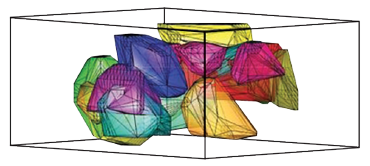
The researchers trained the bats to fly around a room to a banana reward, which was sometimes hidden behind a curtain. In one experiment, the team placed wire probes in the hippocampus of three bats, eavesdropping on a total of 309 neurons in the vicinity of the electrodes. Of those, 58 fired when a bat was at certain angles to its goal and 49 fired when it was certain distances from its goal. Twenty-four of the neurons responded to both angle and distance. With input from those three types of neurons, the bat’s brain kept track of the location of the treat.
“It’s an exciting and important study,” says Hugo Spiers, a neuroscientist at University College London who studies navigation in people and rats. “How cells in the hippocampus might provide guidance signals has been very underinvestigated.” Spiers is now looking for similar goal-directed neurons in rats. People probably have neurons similar to those reported by Ulanovsky, Spiers adds.
Actions and reactions
Before starting his group at the Weizmann Institute, Ulanovsky learned about bats in the lab of Cynthia Moss, now Kothari’s adviser at Johns Hopkins. Moss focuses on an area on the surface of the brain, the midbrain superior colliculus. Like the hippocampus, the superior colliculus also maps a bat’s environment, but there’s a difference. The hippocampus makes a map of environmental features with respect to each other; no matter where the bat is, it keeps the same basic mental map. The superior colliculus generates a map of the world with the bat at the center, so the map changes as the animal moves.
The superior colliculus links what an animal perceives with how it moves in response. In an eyesight-favoring animal like a human, that might mean turning the head or shifting gaze to get a better look at the sudden movement of an oncoming car or a zooming baseball. For bats, one role of the superior colliculus is to help the bat orient itself to sounds, such as the echoes of its own calls.

Moss and her team study big brown bats (Eptesicus fuscus), which, in fact, are “not very big,” Moss says. They’re a bit smaller than the average hamster, though their wingspan is a foot long. In the wild, these bats nosh on beetles and other small insects. Measuring the precise distance to an insect meal, with both predator and prey aloft, is a crucial life skill.
As the bats flew their oatmeal-container obstacle course, and another that required them to find a hole in a net, Kothari and Wohlgemuth recorded neuron activity, with sensors similar to Ulanovsky’s. But to match specific neurons with what the bats were doing and perceiving, the scientists needed to know what calls the animals produced, and what echoes the animals heard. That’s where the microphones around the room come in.
The researchers took advantage of the fact that echolocation is a back and forth between a bat and its world. The bat can tune the direction and rate of its calls, depending on what it’s investigating. So the scientists, eavesdropping with ultrasonic microphones, can infer what the bats are homing in on, as if the animals are broadcasting, for example, “I’m focusing in on this yummy mealworm on my right.” Then, the researchers used computer software to predict what echoes would come back to the bat. (Putting mikes on the bats’ heads would be too heavy for the lightweight fliers, and probably not sensitive enough to pick up those echoes, anyway.)
Moss and colleagues predicted that certain neurons would respond to the angle an echo returned from, as well as to the time delay, which indicates the distance of the sound-reflecting object. Indeed, of 119 neurons the researchers managed to monitor from two big brown bats, 41 fired in response to an echo returning at particular angles and distances from the animal. Those neurons were helping the bats localize objects in three-dimensional space.
During their flights, the bats sometimes sent out sonar sound groups, rapid clusters of echolocation calls. Moss had hypothesized that these clusters help bats get better spatial resolution to really focus on the objects of greatest interest. That’s important, for instance, when navigating a dense forest or cluttered room. The new study, not yet published, supports the idea.
The bats seem to use the clusters to narrow interest to objects a certain distance away, which the bats can measure by the time delay between their call and the returning echo. The farther away something is, the longer the delay. When the bats were just doing normal, nonclustered echolocation, a given neuron that fires for an eight-millisecond echo delay would also respond to a range of echo times — say, any time between four and 12 milliseconds, Moss explains. But when the bats emitted clustered calls, the same neuron would respond only to echoes coming in at a delay close to eight milliseconds. The bats were fine-tuning their brains so they could get a better, sharper impression of the most interesting objects, she says.
The value of the study lies in the observations in untethered animals, says Shihab Shamma, a neuroscientist and engineer at the University of Maryland in College Park who studies sound processing in ferrets. “This one is more natural,” he says. “That’s really cool, to actually see what the processing is in the brain,” Shamma says.
Because the circuitry of the superior colliculus is common across mammals, Kothari predicts that similar 3-D processing of space occurs in humans and other primates, too.
From all directions
These latest findings with untethered bats broaden understanding of how animals navigate. But the researchers are well aware that each study focuses on only a small part of a larger process. For example, what happens after a navigation-related neuron in the superior colliculus or hippocampus fires? How does the brain turn neuron firing into a map of its world or a decision to move from here to there? “Very little is known,” Ulanovsky says.
Razak, at UC Riverside, has an idea about how the firing of certain neurons gets interpreted, though it’s only a hypothesis. He studies echolocation as well as direct listening for environmental sounds in a group of bat species called gleaning bats. They’re also called whispering bats because they emit quiet echolocation calls as they fly along, ears cocked for the rustles of insect prey on the ground.
Specifically, Razak works with gleaners known as pallid bats (Antrozous pallidus), because of their white bellies, which Razak suspects might offer camouflage from the gaze of insects looking upward. Pallid bats are remarkably good at pinpointing the location of a sound, with an accuracy of 3 to 4 degrees, Razak says. Humans appear to be better at this task, able to tell the difference between sounds separated by just 1 to 2 degrees. But we have the advantage of several inches between our two ears, making it easier to triangulate the source of sound. “If you normalize to head size, the bat is a champion,” Razak says.
He studies the auditory cortex, an outer part of the brain involved in hearing and interpreting sounds. In his previous research, Razak reported how certain cortex neurons, in anesthetized bats, respond to sounds coming in from different angles in a horizontal semicircle in front of the animal. In a 2015 report in the Journal of Neuroscience, he started to explain how bats determine the vertical angle to dinner.
There are two overlapping maps in the cortex, one for horizontal and one for vertical angles. For the horizontal angle, one group of neurons fires when a sound comes in from directly in front of the bat’s nose. Other groups respond to sounds to the left or the right of the animal. The auditory cortex on the right side of the brain responds to sounds in what Razak refers to as the left “hemifield” — anywhere to the left side of the head. The more right-brain neurons are firing, the more directly to the left the sound is. The same thing happens on the left side of the bat’s brain, for sounds on the right.
A second map indicates the vertical angle. A few neurons fire for sounds that are coming in low, and more fire for sounds coming in from a higher elevation. To decode those signals, Razak hypothesizes, there could be some as-yet-undefined “comparer” that integrates the information from the two maps. If the comparer is getting mostly straight-ahead signals, it knows the sound is coming from dead in front of the bat’s nose. If it’s getting mostly right hemifield signals from the left side of the brain, it can deduce that the sound is coming from somewhere to the right side of the head, at a range of horizontal or vertical angles to the ear. If it’s hearing a lot of that input from the right side of the brain, then the sound is on the left.
This theory is the first idea proposed for how the auditory cortex of any animal understands the location of an object at both horizontal and vertical angles, Razak says. He’s now designing experiments to test this idea and search for the comparer.
Taken together, these studies are beginning to paint a picture of what goes on in the brain as a bat perceives and moves through its environment. But there’s still plenty of uncertainty about the bat brain and how well it matches to what the human brain does. “These are still big questions: How do we make sounds and how does our brain control what we make? How do we develop the sense of localization?” says Razak. “The bats continue to offer some interesting insight.”
What’s already certain is that the flying creatures have earned the respect of the scientists working with them. After all, Moss notes, the big brown bat’s brain is the size of a lima bean, but still manages to process sounds in a way human sonar engineers envy.
This story appears in the September 30, 2017 issue with the headline, “Bat brains: Studies of free-flying bats reveal nerve cells that enable complex navigation.”
